Human genetics. Genealogical method.
The specificity of a person as a genetic object is reflected in the set of methods that are used in human genetics.
Comes to the first place genealogical method , or the pedigree method, which involves tracing a disease or pathological sign in a family or clan, indicating the type of relationship between members of the pedigree. This is one of the oldest and most widely used methods. The method is applicable if the direct maternal and paternal relatives of the owner of the studied trait are known in a number of generations. Collecting information starts from proband, which is the name of the person who first came into the field of view of the researcher. Usually this is a patient or a carrier of some kind of mutation. Children of one parental couple (brothers and sisters) are called siblings... The method is used in establishing the hereditary nature of the trait under study, in determining the type of inheritance, the presence of linkage, in medical and genetic counseling, etc.
Rules for compiling pedigrees
1. The pedigree is depicted so that each generation is on its own horizontal or radius (for extensive pedigrees). Generations are numbered in Roman numerals, and members of the pedigree are numbered in Arabic.
2. Compilation of the pedigree starts from the proband. Place the symbol of the proband (depending on gender - a square or a circle indicated by an arrow) so that you can draw a pedigree from it both up and down.
3. First, next to the proband, place the symbols of his siblings in birth order (from left to right), connecting them with a graphic beam.
4. Above the proband line, indicate the parents by connecting them to each other with a marriage line.
5. On the line (radius) of the parents, draw the symbols of the closest relatives and their spouses, connecting their degrees of kinship, respectively.
6. On the line of the proband, indicate his cousins, etc. brothers and sisters, connecting them appropriately with the parental line.
7. Above the line of the parents, draw the line of grandparents.
8. If the proband has children or nephews, place them on the line below the proband.
9.After the image of the pedigree (or simultaneously with it), appropriately show the owners or heterozygous carriers of the trait (most often, heterozygous carriers are determined after the compilation and analysis of the pedigree).
10. Indicate, if possible, the genotypes of all members of the pedigree.
11. If there are several hereditary diseases in the family that are not related to each other, make up the pedigree share of each disease separately.
Pedigree analysis
When analyzing pedigrees, one should take into account a number of features of different types of inheritance of traits. Inheritance types:
ü Autosomal dominant inheritance - inheritance of dominant traits that are not sex-linked. Such signs are often found in the pedigree, in almost all generations, equally often in representatives of both sexes; if the carrier is one of the parents, then the trait is manifested either in all descendants, or in half. According to this type, dwarfism, the presence of freckles, six-fingeredness, myopia, etc. are inherited.

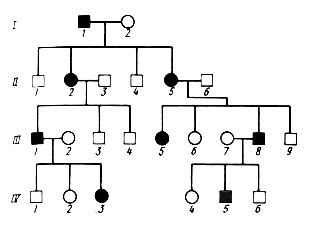
ü Autosomal recessive inheritance - inheritance, in which non-sex-linked traits are phenotypically manifested only in homozygotes for recessive alleles. The symptom is rare, not in all generations, equally often in both sexes; the trait can appear in children, even if the parents do not have this trait; if one of the parents is a carrier of the trait, then the trait will either not appear in children, or it will appear in half of the offspring. This is how diabetes mellitus, some forms of schizophrenia, red hair, negative Rh factor, etc. are inherited.
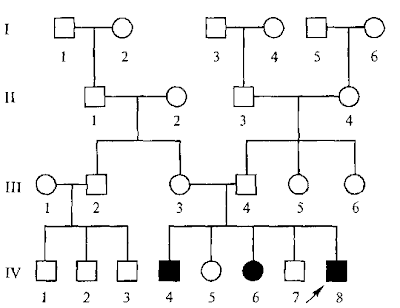
Often autosomal recessive inheritance of the trait manifests itself in the case of consanguineous marriages
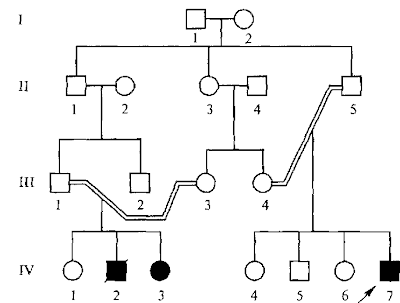
ü Dominant X-linked inheritance - the trait is more common in females, since they can inherit it with equal probability from both the father and the mother, and men can only inherit it from their mothers. If the mother is sick, and the father is healthy, then the trait is transmitted to the offspring, regardless of gender, and can manifest itself in both boys and girls. If the mother is healthy and the father is sick, then all the daughters will have the symptom, but the sons will not. Darkening of tooth enamel, etc.
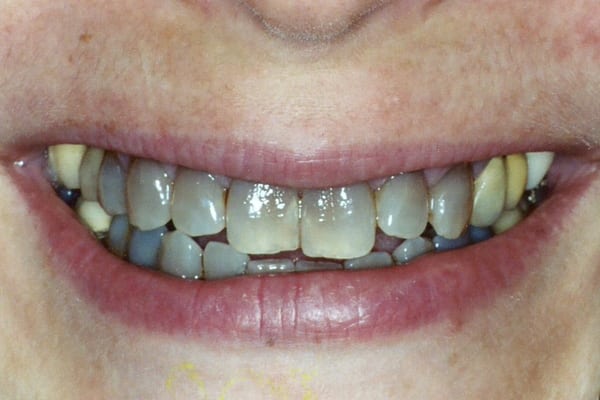
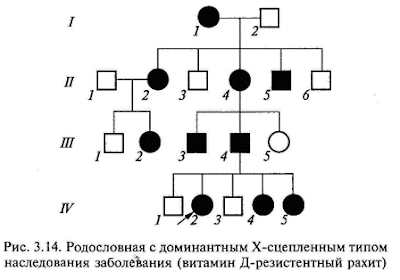
ü Recessive X-linked inheritance - the sign is more common in males, usually manifests itself after a generation; if both parents are healthy, but the mother is heterozygous, then the symptom is often manifested in 50% of the sons; if the father is sick, and the mother is heterozygous, then females can also become owners of the trait. Hemophilia, color blindness, etc.
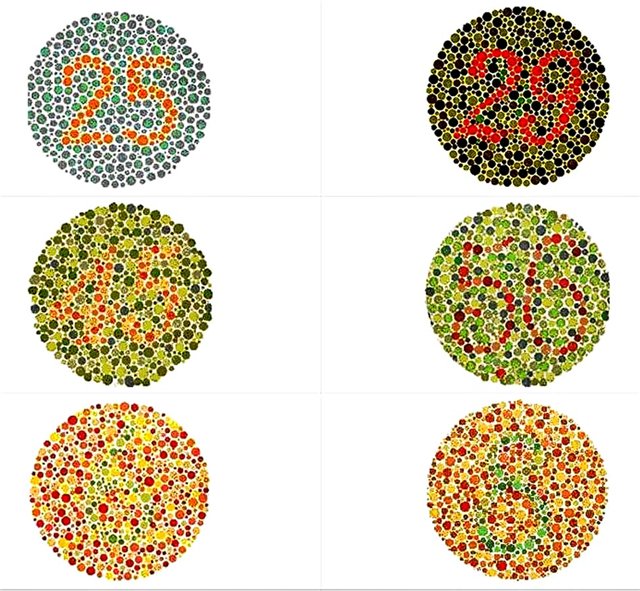
ü Y-linked inheritance - the sign is found only in males; if a father bears a sign, then, as a rule, all his sons have this sign. Hypertrichosis, etc.
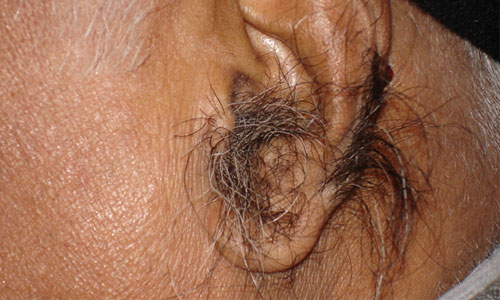
Mitochondrial or cytoplasmic inheritance
–
it is the inheritance of genes localized in mitochondrial DNA. The features of this type of inheritance are determined by the fact that mitochondria in human cells always have a maternal origin, since they enter the zygote only with the cytoplasm of the egg (the sperm head is practically devoid of cytoplasm and cytoplasmic structures). Mitochondrial DNA contains several thousand genes. Mutations of these genes lead to the development of rather serious diseases of the nervous, muscular system and sensory organs, which constitute a special group of human pathology - mitochondrial diseases.
The following features are characteristic of mitochondrial inheritance:The disease is transmitted only from the mother; bboth boys and girls are deserted; bSingle fathers do not transmit disease to their daughters or sons.
Mitochondrial diseases include: Leber optic atrophy, progressive ophthalmoplegia, Zellweger syndrome, Kearns-Sayr syndrome, mitochondrial myopathy, etc.







